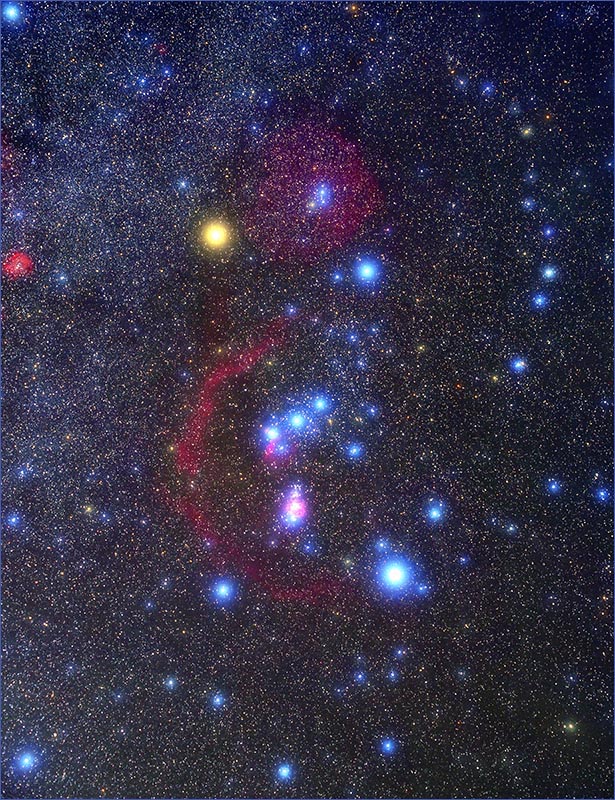DavidLeodis wrote:In information with the image in Ken's website it lists the exposure details, which add up to 17 hours. Will the individual exposure times be concurrently acquired, as if not then the 17 hours will mean at least some data must have been acquired in daylight (unless they were acquired over differing days).
There's absolutely no reason that such data needs to be acquired in one session. Even the individual components would have been made up of shorter exposures, likely from different sessions. It's common for images like this to be made over days, weeks, or even months, optimizing the exposures for the best seeing, weather, and position in the sky.
In the image's Exif data...
An EXIF header has no meaning with an astronomical image. On one level, that's because many images are collected over a long period of time, as noted above. On another, it's because the original data has no EXIF information associated with it, this being a header format for JPEG images, which play no role in astronomical imaging. Most of the information found in EXIF files is relevant to cameras and lenses, not telescopes.
Astronomical data is usually in a format called FITS. FITS files have complex headers with lots of useful information (target position, time, plate distortion, exposure length, camera temperature, and much more). But since most astronomical images are synthesized out of multiple raw data sources, a great deal of this information loses meaning (such as exposure time, date and time of image, etc).
If you're looking at a night sky image made with an ordinary camera, you might expect some useful data in the EXIF header. Otherwise, nothing at all except maybe the last time the processor ran it through Photoshop to create a postable image.
As I find it adds interest to know when an image was acquired I wish that such information was always stated. This is a general comment, applying to all APOD's.
This is often on the imager's website. But for targets like this, it hardly matters. Unless there's some transient phenomenon like a supernova, a galaxy's appearance will not change over the course of your lifetime.
 Bright Spiral Galaxy M81
Bright Spiral Galaxy M81


